|
Books Should Be Free Loyal Books Free Public Domain Audiobooks & eBook Downloads |
|
|
Books Should Be Free Loyal Books Free Public Domain Audiobooks & eBook Downloads |
|
Literature |
|---|
|
Book type:
Sort by:
View by:
|
By: Henry Lawson (1867-1922) | |
|---|---|
 Shame of Going Back
Shame of Going Back
Henry Archibald Hertzberg Lawson was an Australian writer and poet. Along with his contemporary Banjo Paterson, Lawson is among the best-known Australian poets and fiction writers of the colonial period and is often called Australia's "greatest short story writer". | |
By: Henry Murger (1832-1861) | |
|---|---|
 Bohemians of the Latin Quarter
Bohemians of the Latin Quarter
As much as any other work of literature, Henri Murger’s 1851 collection of witty sketches Scènes de la vie de bohème shaped the later romanticized image of the bohemian artist: independent, insouciant, exuberantly lustful, devoted to Art for Art’s sake no matter how cold and hungry the artist might be. Four young Parisian artists, Schaunard the composer, Marcel the painter, Rodolphe the poet, and Colline the philosopher, form an informal Bohemian alliance dedicated to Art and the joy of Life... | |
By: Henry Peterson (1818-1891) | |
|---|---|
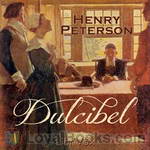 Dulcibel A Tale of Old Salem
Dulcibel A Tale of Old Salem
Dulcibel is a young, pretty and kind-hearted fictional character charged with Witchcraft during the infamous Salem Witch trials. During this time there is a group of "afflicted girls" who accuse Dulcibel and many others of Witchcraft, and during their trials show "undoubtable" proof that these people really are Witches. Will Master Raymond, Dulcibel's lover, be able to to secure Dulcibel's release from jail? Or will Dulcibel's fate be the gallows like so many other accused Witches of her time? | |
By: Henry van Dyke (1852-1933) | |
|---|---|
 Blue Flower
Blue Flower
"Sometimes short stories are brought together like parcels in a basket. Sometimes they grow together like blossoms on a bush. Then, of course, they really belong to one another, because they have the same life in them. ...There is such a thought in this book. It is the idea of the search for inward happiness, which all men who are really alive are following, along what various paths, and with what different fortunes! Glimpses of this idea, traces of this search, I thought that I could see in certain tales that were in my mind,—tales of times old and new, of lands near and far away... | |
 Companionable Books
Companionable Books
Many books are dry and dusty, there is no juice in them; and many are soon exhausted, you would no more go back to them than to a squeezed orange; but some have in them an unfailing sap, both from the tree of knowledge and the tree of life. Here I have written about a few of these books which have borne me good company, in one way or another, -- and about their authors, who have put the best of themselves into their work. Such criticism as the volume contains is therefore mainly in the form of appreciation with reasons for it... | |
By: Henry W. Lucy (1845-1924) | |
|---|---|
 Faces and Places
Faces and Places
Faces and Places is a collection of articles on nineteenth century travel, events and personalities by the British journalist Henry Lucy, who wrote for the Daily News, a London newspaper. His open letter To Those About to Become Journalists rings as true today as when it was written.The first article, “Fred” Burnaby, includes a lively account of a balloon trip, while Night and Day on the Cars in Canada and Easter on Les Avants relate Lucy’s experiences of rail travel at that time. Other travel tales (A Night on a Mountain, Mosquitoes and Monaco, and Oysters and Arcachon) provide an insight into the Victorian Englishman’s attitude to Europe... | |
By: Henry Wadsworth Longfellow | |
|---|---|
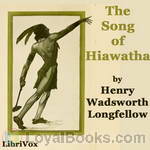 Hiawatha
Hiawatha
I sing the Song of Hiawatha,Brave of heart and strong of arm.Daughter’s son of old Nokomis,Fathered by the harsh West Wind. With its regular, beating rhythm, the Song of Hiawatha has often been parodied, but in truth, it is a powerful, emotional epic; a hero’s life, his loves and suffering. The legends and traditions of the North American Indian swirl together through the tale like a mountain stream, tumbling white over the rocks, and caressing the mossy tree roots. | |
 Evangeline
Evangeline
Evangeline is one of Longfellow’s most popular poems and was once a great favorite with the American people. For many years almost every school child studied this poem during the middle school years. Although the decline of the reputation of the once-idolized poet has also brought neglect to this classic, it is still a very touching and expertly written work of art. It is based upon the tragic expulsion of the French settlers from Acadia (located in the Canadian maritime provinces) during the French & Indian War (1754-1763)... | |
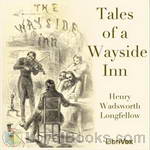 Tales of a Wayside Inn
Tales of a Wayside Inn
Mostly a collection of story-telling poems told by a group of friends in a tavern late one night. "Tales" includes the famous Paul Revere's ride, together with poems of many tales, countries and styles. | |
 Rainy Day
Rainy Day
MANUAL OF SURGERY, OXFORD MEDICAL PUBLICATIONSBY ALEXIS THOMSON, F.R.C.S.Ed.PREFACE TO SIXTH EDITION Much has happened since this Manual was last revised, and many surgical lessons have been learned in the hard school of war. Some may yet have to be unlearned, and others have but little bearing on the problems presented to the civilian surgeon. Save in its broadest principles, the surgery of warfare is a thing apart from the general surgery of civil life, and the exhaustive literature now available on every aspect of it makes it unnecessary that it should receive detailed consideration in a manual for students... | |
By: Herbert Allen Giles (1845-1935) | |
|---|---|
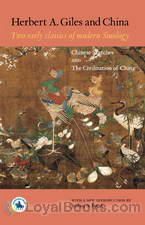 China and the Chinese
China and the Chinese
Herbert Allen Giles (1845-1935) spent several years as a diplomat in China and in 1897 was appointed Cambridge University’s second professor of Chinese. His published works cover Chinese language and literature, history and philosophy. This series of lectures, published as “China and the Chinese”, was given at Columbia University in 1902, to mark the establishment of a Chinese professorship there. The lectures were not intended for the specialist, more to urge a wider and more systematic study of China and its culture, and to encourage new students into the field... | |
By: Herbert George Jenkins (1876-1923) | |
|---|---|
 Malcolm Sage, detective
Malcolm Sage, detective
A collection of short stories that chronicles the first year of the Malcolm Sage Detective Bureau. | |
By: Herman Melville (1819-1891) | |
|---|---|
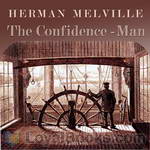 The Confidence-Man: His Masquerade
The Confidence-Man: His Masquerade
The Confidence-Man: His Masquerade was the last major novel by Herman Melville, the American writer and author of Moby-Dick. Published on April 1, 1857 (presumably the exact day of the novel's setting), The Confidence-Man was Melville's tenth major work in eleven years. The novel portrays a Canterbury Tales-style group of steamboat passengers whose interlocking stories are told as they travel down the Mississippi River toward New Orleans. The novel is written as cultural satire, allegory, and metaphysical treatise, dealing with themes of sincerity, identity, morality, religiosity, economic materialism, irony, and cynicism... | |
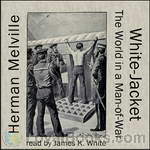 White Jacket, or The World in a Man-of-War
White Jacket, or The World in a Man-of-War
This is a tale based on Melville's experiences aboard the USS United States from 1843 to 1844. It comments on the harsh and brutal realities of service in the US Navy at that time, but beyond this the narrator has created for the reader graphic symbols for class distinction, segregation and slavery aboard this microcosm of the world, the USS Neversink. (Introduction by James K. White) | |
 Billy Budd
Billy Budd
Young naive sailor Billy Budd is impressed into military service with the British navy in the 1790s, framed for conspiracy to mutiny, summarily convicted in a drum-head court martial, and hanged. Billy Budd is the final published work by Herman Melville, discovered in his personal papers three decades after his death. | |
By: Hermann Hesse (1877-1962) | |
|---|---|
 Siddhartha
Siddhartha
Once regarded as a cult book in the 1960s by the Flower Power generation, Siddhartha by Herman Hesse remains even today a simple and fresh tale of a man's spiritual quest. Penned by a deeply spiritual German author, Siddhartha explores multiple themes of enlightenment, thinking beyond set rules, love and humanity. Siddhartha is a young contemporary of the spiritual master Gautam Buddha who lived in India at some time during the 4th century BC. The story has striking parallels to Buddha's own life story in which he abandons his wealth and status as the young prince of Kapilavastu, his wife and young son and his family to embark on a voyage of self discovery... | |
By: Hilaire Belloc | |
|---|---|
 First and Last
First and Last
“When a man weighs anchor in a little ship or a large one he does a jolly thing! He cuts himself off and he starts for freedom and for the chance of things. He pulls the jib a-weather, he leans to her slowly pulling round, he sees the wind getting into the mainsail, and he feels that she feels the helm. He has her on a slant of the wind, and he makes out between the harbour piers.” (quotation from Hilaire Belloc) | |
 On Something
On Something
“Now that story is a symbol, and tells the truth. We see some one thing in this world, and suddenly it becomes particular and sacramental; a woman and a child, a man at evening, a troop of soldiers; we hear notes of music, we smell the smell that went with a passed time, or we discover after the long night a shaft of light upon the tops of the hills at morning: there is a resurrection, and we are refreshed and renewed.” – Hilaire Belloc | |
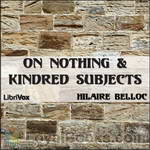 On Nothing & Kindred Subjects
On Nothing & Kindred Subjects
“I knew a man once, Maurice, who was at Oxford for three years, and after that went down with no degree. At College, while his friends were seeking for Truth in funny brown German Philosophies, Sham Religions, stinking bottles and identical equations, he was lying on his back in Eynsham meadows thinking of Nothing, and got the Truth by this parallel road of his much more quickly than did they by theirs; for the asses are still seeking, mildly disputing, and, in a cultivated manner, following the... | |
 The Free Press
The Free Press
I propose to discuss in what follows the evil of the great modern Capitalist Press, its function in vitiating and misinforming opinion and in putting power into ignoble hands; its correction by the formation of small independent organs, and the probably increasing effect of these last. (Introduction by Hilaire Belloc) | |
By: Honore de Balzac (1799-1850) | |
|---|---|
 Letters of Two Brides
Letters of Two Brides
An epistolary novel written by renowned French novelist Balzac, who is regarded as one of the founders of realism and a significant influence to later novelists, the novel focuses on two young women who preserve their friendship through regular correspondence. Originally published in the French newspaper La Presse in 1841 as a serial, the piece later became a part of Balzac’s distinguished novel sequence La Comédie Humaine, or The Human Comedy. Furthermore, Letters of Two Brides surrounds intriguing topics including love, romance, confusion, duty, and the complexity of relationships... | |
By: Honoré de Balzac (1799-1850) | |
|---|---|
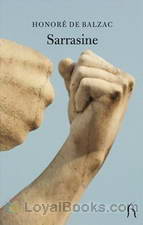 Sarrasine
Sarrasine
Published by Honoré de Balzac in the tempestuous year of 1830, the tale follows the undulating pathways of Sarrasine the sculptor’s shocking journey to his coming of age. As one of the “fathers of realism” Balzac painted with his words a vivid portrait of life in the swirling salons of Europe at the end of the Bourbon monarchy, and we follow Sarrasine from France to Italy in search of both his métier and his muse.However it is also the story of La Zambinella, an Italian singer with whom Sarrasine falls madly and passionately in love. But that passion holds a secret which Sarrasine spies too late. | |
 The Girl with the Golden Eyes
The Girl with the Golden Eyes
"Give me a feast such as men give when they love," she said, "and whilst I sleep, slay me..."Listeners who like to plunge straight into a story would do well to skip the lengthy preamble. Here, Balzac the virtuoso satirist depicts the levels of Parisian society as a version of the Inferno of Dante - but perhaps keeps the reader waiting too long for the first act of his operatic extravaganza.Our beautiful, androgynous hero, Henri de Marsay, is one of the bastard offspring of a depraved Regency milord and himself practises the cynical arts of the libertine... | |
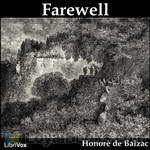 Farewell
Farewell
In his startling and tragic novella Farewell (‘Adieu’), Balzac adds to the 19th century’s literature of the hysterical woman: sequestered, confined in her madness; mute, or eerily chanting in her moated grange. The first Mrs Rochester lurks in the wings; the Lady of Shalott waits for the shadowy reflection of the world outside to shatter her illusion. Freud’s earliest patients will soon enter the waiting-room in their turn. Whilst out hunting two friends come across a strange waif-like woman shut up in a decaying chateau which one of them dubs “the Palace of the Sleeping Beauty”... | |
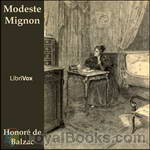 Modeste Mignon
Modeste Mignon
Modeste Mignon, a young provincial woman of romantic temperament, imagines herself to be in love with the famous Parisian poet Melchior de Canalis. However, he is not moved by her attentions. He invites his secretary Ernest de la Brière to "deal with the matter". Ernest answers Modeste's letters in his name and acts as her lover, disguised as Canalis. The scene changes dramatically when Ernest discoveres that Modest is, in fact, a rich heiress. Would he be able to win her heart despite his lie? | |
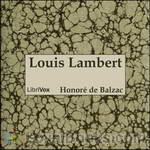 Louis Lambert
Louis Lambert
Louis Lambert is an 1832 novel by French novelist and playwright Honoré de Balzac (1799–1850), included in the Études philosophiques section of his novel sequence La Comédie humaine. Set mostly in a school at Vendôme, it examines the life and theories of a boy genius fascinated by the Swedish philosopher Emanuel Swedenborg (1688–1772). Balzac wrote Louis Lambert during the summer of 1832 while he was staying with friends at the Château de Saché, and published three editions with three different titles... | |
 Father Goriot
Father Goriot
One of Balzac's most popular works, set around 1815 during the re-ascendancy of the Bourbon kings following the defeat of Napoleon. Said to have been an inspiration to Charles Dickens and Henry James as well as others, the novel seeks to portray the realism of scenes and people. It is also a commentary upon the changing social strata and mores of the day. | |
 Eugénie Grandet
Eugénie Grandet
Eugénie Grandet, first published in 1833, is one of Honoré de Balzac's finest novels, and one of the first works in what would become his large novel series titled La Comédie Humaine. Set in a provincial town in post-Revolutionary France, the story deals with money, avarice, love, and obsession. A wealthy old miser must manage the passion of his innocent daughter, who later has to navigate on her own the treacherous ways of a world in which money is "the only god." Balzac's meticulous use of psychological and physical detail influenced the development of 19th-century literary realism, in the hands of writers such as Dickens, Dostoyevsky, Flaubert, and Henry James. | |
 Magic Skin
Magic Skin
Something along the lines of Dorian Gray as part of the Comedies Humane Philosophique, this is Balzac's first successful novel. He even wrote "criticisms" of the writing himself in promotion of the book, in addition to hyping the work before it even came out. It is a criticism of materialism and French bourgeoisie as so many of his compiled works seek to be. Some same characters reappear. | |
 Cousin Betty
Cousin Betty
Cousin Betty (La Cousine Bette), published in serial format in 1846, was one of the last and greatest of Balzac's works. It was part of his long novel collection titled La Comédie Humaine. Set in mid-19th-century France, it tells the story of a woman who resents her position as a "poor relation." As we follow her schemes to bring ruin upon the more privileged members of her family, we see a society in transition. The stability and idealism of the old order give way to a new bourgeois world in which virtue is strangled in the struggle for power and money... | |
 Cousin Pons
Cousin Pons
Cousin Pons is one of the final works in Balzac's long novel series titled The Human Comedy. It was published in 1847, along with Cousin Betty, as one of a complementary pair of novels, collectively titled Poor Relations. While Cousin Betty tells the story of a bitter woman who seeks revenge on her wealthier relations, in Cousin Pons, Balzac turns to the story of an timid, innocent man who is exploited and victimized by the wealthier members of his extended family.Balzac offers probing character portraits and an indictment of greed and materialism in this detailed portrait of mid-19th-century French life... | |
 Gobseck
Gobseck
Part of the La Comedie Humane and something of a sequence to Balzac's Father Goriot, the short book's title is the name of the pawn broker/money lender the father Goriot utilized to maintain his spoiled daughters in the luxury he had accustomed them to. This is a continuation of the tale of one of those daughters, Mme Restaud. | |
 Firm of Nucingen
Firm of Nucingen
Part of the Comedie Humane and a "supplementary" tale to go with Father Goriot and Gobseck. Nucingen is the married family name of one of Father Goriot's daughters. "James Waring" is a pseudonym of Ellen Marriage (Balzac was considered sometimes too racy by the Victorian Age). | |
 Lost Illusions: Two Poets
Lost Illusions: Two Poets
Two Poets is the first book in Balzac’s Lost Illusions trilogy, which is part of his sweeping set of novels collectively titled La Comédie Humaine. The story is set in post-Napoleonic France, when the new bourgeoisie was jostling for position alongside the old aristocracy. We meet Lucien Chardon, a young provincial who romantically aspires to be a poet, and his friend David Séchard, who struggles to manage his father’s printing shop and falls in love with Lucien’s sister Ève. The picture of provincial life that emerges is laced with greed, ambition, and duplicity... | |
 Another Study of Woman
Another Study of Woman
A series of tales -- told by men, of course -- about women. Though the book first appeared in 1842, Balzac later added to it as an addenfum a tale of 1831, La Grande Bretèche. That will be read later, keeping it separate to mirror the form of the English translation here used. - Summary by Nicholas Clifford | |
 Chouans (version 2)
Chouans (version 2)
“The Chouans” was the first novel published under Balzac’s own name . It became the first book in the great work of his lifetime — the novel series titled “The Human Comedy.” Balzac was impressed by the writings of Sir Walter Scott. Scott made Scottish history come alive by creating fictions that used real history as backdrop. Balzac’s novel is set in 1799 — the year that Napoleon became First Consul of France. In the far west of France , anti-revolutionary sentiment still simmered... | |
By: Horace Baker Browne (1874-1964) | |
|---|---|
 Short Plays from Dickens
Short Plays from Dickens
Here is a collection of 20 short plays drawn from various books by Charles Dickens such as Nicholas Nickleby, David Copperfield, Bleak House, and Our Mutual Friend. "For the use of Amateur and School Dramatic Societies" - Summary by ToddHW Cast list: Introduction: ToddHW Mrs Tibbs Boarding House - From Sketches by Boz Mrs Tibbs - A boarding-house keeper: Availle Mr Tibbs - Her husband: Tim Watkins Mrs Maplesone - Boarder at Mrs. Tibbs': TriciaG Miss Matilda Maplesone - Boarder at Mrs. Tibbs': Rachel Miss Julia Maplesone - Boarder at Mrs... | |
By: Horace Walpole | |
|---|---|
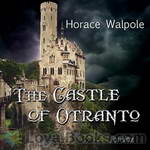 The Castle of Otranto
The Castle of Otranto
The Castle of Otranto is a 1764 novel by HoraceWalpole. It is generally held to be the first gothic novel,initiating a literary genre which would become extremelypopular in the later 18th century and early 19thcentury. Thus, Castle, and Walpole by extension isarguably the forerunner to such authors as AnnRadcliffe, Bram Stoker, Daphne du Maurier, andStephen King. | |
By: Horatio Alger, Jr. (1832-1899) | |
|---|---|
 Timothy Crump's Ward
Timothy Crump's Ward
A poor family is surprised with an infant on their doorstep on New Year’s Eve with a note and monetary support requesting them to raise the child. Eight years later, the child is stolen and the family is put into more trouble trying to find her. This is a story of how love and good morals are reward with a fairy tale “happily ever after” ending. | |
 Grand'ther Baldwin's Thanksgiving, with Other Ballads and Poems
Grand'ther Baldwin's Thanksgiving, with Other Ballads and Poems
Horatio Alger, better known for his juvenile fiction, also penned some great poetry. His Ballads, including the 8 war poems and his odes, are collected in this volume. | |
 Mark the Match Boy or Richard Hunter's Ward
Mark the Match Boy or Richard Hunter's Ward
In this third installment from the “Ragged Dick” series by Horatio Algers, Jr., the reader is reacquainted with some old friends and meets young Mark Manton. Mark is a match boy plagued by bad luck and an even worse guardian. But, with new friends, hard work, and smart choices, Mark may just find his luck taking a turn for the better. summary by tfaulder | |
 Rough and Ready OR Life Among the New York Newsboys
Rough and Ready OR Life Among the New York Newsboys
Join Rough and Ready for his adventure on the streets of New York City. Working as a newsboy, Rough and Ready tries to support himself and his sister on his meager earnings. Unfortunately, their stepfather is seeking to kidnap little Rose, getting an education is hard work, swindlers are trying to trick him out of his money, and thieves are planning nefarious deeds. Luckily for Rough and Ready, he makes some good friends along the way. Summary by Tori Faulder | |
By: Howard Pyle (1853-1911) | |
|---|---|
 Howard Pyle's Book of Pirates
Howard Pyle's Book of Pirates
Swashbuckling tales of legendary pirates, buccaneers, and marooners, terrors of the Spanish Main. | |
 Twilight Land
Twilight Land
The room was all full of twilight; but there they sat, every one of them. I did not count them, but there were ever so many: Aladdin, and Ali Baba, and Fortunatis, and Jack-the-Giant-Killer, and Doctor Faustus, and Bidpai, and Cinderella, and Patient Grizzle, and the Soldier who cheated the Devil, and St. George, and Hans in Luck, who traded and traded his lump of gold until he had only an empty churn to show for it; and there was Sindbad the Sailor, and the Tailor who killed seven flies at a blow,... | |
By: Hugh Walpole (1884-1941) | |
|---|---|
 Jeremy
Jeremy
With affectionate humor, Mr. Walpole tells the story of Jeremy and his two sisters, Helen and Mary Cole, who grow up in Polchester, a quiet English Cathedral town. There is the Jampot, who is the nurse ; Hamlet, the stray dog ; Uncle Samuel, who paints pictures and is altogether 'queer’; of course, Mr. and Mrs. Cole, and Aunt Amy. Mr. Walpole has given his narrative a rare double appeal, for it not only recreates for the adult the illusion of his own happiest youth, but it unfolds for the child-reader a genuine and moving experience with real people and pleasant things... | |
 Harmer John; An Unworldly Story
Harmer John; An Unworldly Story
Hjalmar Johanson is a boyish unworldly Swedish body builder come to Walpole’s fictional cathedral town of Polchester. His name is “simplified” by the townsfolk to Harmer John. He is attracted to Polchester by the cathedral. He has a vision of transforming the town and its populace to a healthier and more beautiful state. He establishes a business, essentially a gymnasium, to help people become healthier. He envisions tearing down the slums along the river and rebuilding the area with more attractive and publicly healthier buildings... | |
By: Irvin S. Cobb (1876-1944) | |
|---|---|
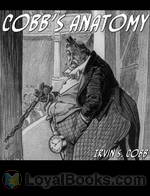 Cobb's Anatomy
Cobb's Anatomy
Irvin Shrewsbury Cobb was born on June 23, 1876. At seventeen years of age, he began writing for the Paducah Daily News, his hometown paper. At nineteen he became the managing editor; up to that point, our nation’s youngest. He worked as a columnist, a humorist and an author. But ‘horror,’ and ’short stories,’ are not why he is remembered. He is remembered because he was, and still is, funny. And although he is now dead–he died March 11, 1944–this work “Cobb’s Anatomy,” among others, has left an indelible mark upon mankind: a smile. | |
 One Third Off
One Third Off
Irvin Shrewsbury Cobb (June 23, 1876–March 11, 1944) was an American author, humorist, and columnist who lived in New York and wrote over 60 books and 300 short stories. Cobb has been described as “having a round shape, bushy eyebrows, full lips, and a triple chin. He always had a cigar in his mouth.” This book is a hilarious account of Cobb’s attempts at weight-loss. | |
By: Irving Bacheller (1859-1950) | |
|---|---|
 Eben Holden - A Tale of the North Country
Eben Holden - A Tale of the North Country
Eben Holden - A Tale of the North Country. Having lost both parents and his home in northern Vermont, orphan Willie Brower is taken in by Eben Holden, "Uncle Eb" who transports him westward to save him from being sent to an orphanage. Through the Adirondacks and into the St. Lawrence valley they travel. Eben is kind, happy, and loves to tell stories to the youngster, many of which were to shape the life and ideals of Willie during his life.This story follows Willie as a young orphan, later as a journalist, and finally as a soldier who enlists in the army at the outset of the American Civil War... | |
By: Isabella Alden (1841-1930) | |
|---|---|
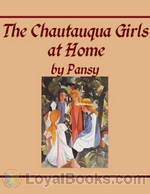 The Chautauqua Girls at Home
The Chautauqua Girls at Home
Sequel to Four Girls at Chautauqua. Ruth, Flossy, Eurie, and Ruth return home as new Christians, eager to begin working. Their new faith clashes with their old lives, which they must overcome, as well as the prejudices of friends and acquaintances. | |
By: Isabella Lilias Trotter (1853-1928) | |
|---|---|
 Parables of the Cross
Parables of the Cross
Death is the Gate of Life. There was deep insight in those old words. For man's natural thought of death is that of a dreary ending in decay and dissolution. And from his standpoint he is right: death as the punishment of sin is an ending.But far other is God's thought in the redemption of the world. He takes the very thing that came in with the curse, and makes it the path of glory. Death becomes a beginning instead of an ending, for it becomes the means of liberating a fresh life.And so the hope that lies in these parable lessons of death and life is meant for those only who are turning to Him for redemption... | |
By: Isabella Matilda Davis Brittingham (1852-1924) | |
|---|---|
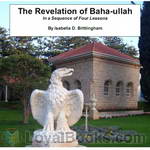 The Revelation of Baha-ullah in a Sequence of Four Lessons
The Revelation of Baha-ullah in a Sequence of Four Lessons
Isabella Matilda Davis Brittingham was a significant early American Bahá’í and was posthumously designated by Shoghi Effendi as one of the 19 Disciples of ‘Abdu’l-Bahá and Heralds of the Covenant. She was born in 1852, the daughter of Benjamin Davis, who was a grandson of John Morton, a signer of the Declaration of Independence. Her sister-in-law heard about the Bahá’í Faith in 1897 and in 1898 Isabella herself became a part of the nascent American Bahá’í community. In September 1901, Isabella went on pilgrimage to the Holy Land, where she met ‘Abdu’l-Bahá, the leader of the Bahá’í Faith and son of the Founder, Bahá’u'lláh... | |
By: Israel Zangwill (1864-1926) | |
|---|---|
 The King of Schnorrers
The King of Schnorrers
Manasseh da Costa is a schnorrer (beggar) who lives on the charitable contributions of the Jews of late 18th-century London. But Manasseh is far from being a humble panhandler for, as every schnorrer knows, supporting the poor is a commandment from God (a mitzvah) not just a favour. And as the descendant of Portuguese Jews who had lived in England for many generations, Manasseh is the social superior of those newly arrived from Eastern Europe (called ‘Tedesco’), even his wealthy patron Joseph Grobstock... | |
By: Ivan Goncharov (1812-1891) | |
|---|---|
 Common Story
Common Story
Alexander Fedoritch Adouev is the naïve, pampered son of Anna Pavlovna, a provincial landowner. He decides to go off to Saint Petersburg, not only to make his mark upon society but also to fulfill his two rosy romantic dreams of becoming a great writer and finding a great love. He is taken under the reluctant wing of his uncle, Piotr Ivanitch Adouev, a pragmatic, hard-headed businessman who scorns everything romantic and tries to cure Alexander Fedoritch of his sentimental, youthful illusions. The... | |
By: Ivan S. Turgenev (1818–1883) | |
|---|---|
 Fathers and Sons
Fathers and Sons
The fathers and children of the novel refers to the growing divide between the two generations of Russians, and the character Yevgeny Bazarov has been referred to as the “first Bolshevik”, for his nihilism and rejection of the old order. Turgenev wrote Fathers and Sons as a response to the growing cultural schism that he saw between liberals of the 1830s/1840s and the growing nihilist movement. Both the nihilists (the “sons”) and the 1830s liberals sought Western-based social change in Russia... | |
By: J. M. Barrie (1860-1937) | |
|---|---|
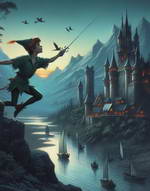 Peter Pan
Peter Pan
His name has become a metaphor for one who will never grow old. Peter Pan by JM Barrie is the story of a boy who remains a boy while the world around him changes. Sir James Mathew Barrie was a Scottish playwright and novelist whose works were received with great critical and commercial success in the late nineteenth and early twentieth century. He discovered the main inspiration for his creative genius in his friendship (and later guardianship) with the children of Arthur and Sylvia Llewellyn-Davies... | |
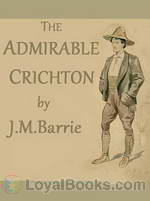 The Admirable Crichton
The Admirable Crichton
From the author of Peter Pan:Lord Loam, a British peer, considers class divisions to be artificial. He promotes his views during tea-parties where servants mingle with his aristocratic guests, to the embarrassment of all. Crichton, his butler, particularly disapproves of this.Loam, his family, a maid, and Crichton are shipwrecked on a deserted tropical island. The resourceful Crichton is the only one of the party with any practical knowledge. Eventually, social roles are reversed, and Crichton becomes the governor. | |
 Peter and Wendy
Peter and Wendy
Peter and Wendy tells the classic story of Peter Pan, a mischievous little boy who can fly, and his adventures on the island of Neverland with Wendy and her brothers, the fairy Tinker Bell, the Lost Boys, the Indian princess Tiger Lily, and the pirate Captain Hook. (Introduction modified from Wikipedia) | |
 Little White Bird
Little White Bird
"A children's book, sharp social commentary and sad psychological thriller about a man's search for a sense of belonging. All in one amazing and lyrical collection. This is the first book in which Peter Pan starts to appear. His adventure in Kensington Gardens are first narrated here. Other than that, it offers a magical portrait of contemporary London, and a realistic tale of a family to which every one of us could have belonged." | |
 Dear Brutus
Dear Brutus
At a house in the country 8 guests are invited to enter a magical wood to see what might have happened had they made a different choice in life. Even though they are warned away from the wood, they take a chance and enter. The title comes from Shakespeare: "The fault lies in our selves, dear Brutus, not in our stars...," and summarizes the theme of this play: given a second chance, will people still make the same mistakes? | |